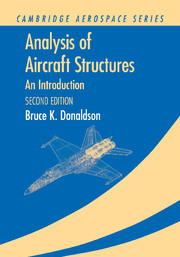Book contents
- Frontmatter
- Contents
- Introduction to the Second Edition
- Introduction to the First Edition
- List of Repeated Engineering Symbols
- Acknowledgments
- Part I The Fundamentals of Structural Analysis
- Part II **Introduction to the Theory of Elasticity**
- Part III Engineering Theory for Straight, Long Beams
- Part IV Work and Energy Principles
- Part V Energy-Based Numerical Solutions
- 16 **Precursor Numerical Analyses**
- 17 Introduction to the Finite Element Method
- 18 Finite Element Truss Problems
- 19 Basic Aspects of Multidimensional Finite Elements
- 20 The Unit Load Method for Determinate Structures
- 21 The Unit Load Method for Indeterminate Structures
- Parts IV and V Review Questions
- Part VI Thin Plate Theory and Structural Stability
- Appendix A Additional Topics
- Appendix B Selected Answers to Exercises
- References
- Index
20 - The Unit Load Method for Determinate Structures
from Part V - Energy-Based Numerical Solutions
Published online by Cambridge University Press: 05 June 2012
- Frontmatter
- Contents
- Introduction to the Second Edition
- Introduction to the First Edition
- List of Repeated Engineering Symbols
- Acknowledgments
- Part I The Fundamentals of Structural Analysis
- Part II **Introduction to the Theory of Elasticity**
- Part III Engineering Theory for Straight, Long Beams
- Part IV Work and Energy Principles
- Part V Energy-Based Numerical Solutions
- 16 **Precursor Numerical Analyses**
- 17 Introduction to the Finite Element Method
- 18 Finite Element Truss Problems
- 19 Basic Aspects of Multidimensional Finite Elements
- 20 The Unit Load Method for Determinate Structures
- 21 The Unit Load Method for Indeterminate Structures
- Parts IV and V Review Questions
- Part VI Thin Plate Theory and Structural Stability
- Appendix A Additional Topics
- Appendix B Selected Answers to Exercises
- References
- Index
Summary
Introduction
This chapter introduces just one of the many applications of the Principle of Complementary Virtual Work (PCVW). There are many small variations on this one application. The unit load method, the dummy load method, the virtual load method, the Maxwell–Mohr method, (Ref. [16]) the Mueller-Breslau method, (Ref. [16]) and the complementary virtual work method are all names given to what is essentially this same procedure. Since, in the case of linearly elastic materials, these same methods of analysis can also be derived from the PVW, (Ref. [16]) this same procedure is sometimes even called the method of virtual work. For the time being, the general form of this basic PCVW analysis procedure is called the unit/dummy/virtual load method. Later, the slight distinctions between the unit load method, the dummy load method, and the virtual load method are described, and the unit load method is chosen for full development.
To add to the confusion of names, there is an equally popular method based upon the Principle of the Minimum Value of the Total (Complementary) Energy that is only stylistically different from the unit/dummy/virtual load method. This method is called Castigliano's second theorem. About half of the engineering students in the United States are first taught the unit/dummy/virtual load method, while the other half are first taught Castigliano's second theorem. There is very little advantage to one of these methods with respect to the other.
- Type
- Chapter
- Information
- Analysis of Aircraft StructuresAn Introduction, pp. 655 - 699Publisher: Cambridge University PressPrint publication year: 2008



